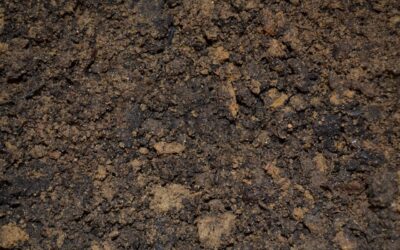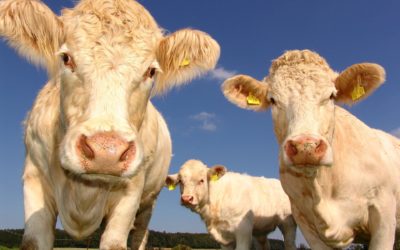What opportunities are Alberta producers taking advantage of and who are the value-add up-and-comers?
Think you know Alberta’s agriculture industry? Don’t blink: it’s changing right before your eyes. From border to border and in ways from tiny to enormous, more value-added opportunities are coming to Alberta. While those opportunities are great news for individual innovative and entrepreneurial farmers, collectively they represent a healthy diversification and maturing of Alberta’s agriculture industry.
“More and more people are realizing what value-add is and where they can incorporate it into their business,” says Darren Walkey, president of innovation and value add with Pleasant Valley Oils near Red Deer, Alta.“For the past 200 years, Canada has been set up as a supply system. In the early days, most of the products produced in Canada would go back to Europe to support the empire. Now we’re seeing it doesn’t make sense to ship the peas to China and buy back the protein to put into our own products. We’re realizing that we’re not solely an export nation; we’re a nation that can create ingredients and products too.”
A decade ago, most farmers attempting to add value to their farm businesses pursued go-it-alone, niche opportunities like growing for farmers’ markets, selling direct to restaurants, or offering on-farm agri-tourism. Some stepped into organics, others planted some acres to speciality crops. While opportunities existed, they tended to be relatively small, rarely replaced a farm’s commodity production, and often carried significant risk.
Today, consumers’ growing interest in (and willingness to spend extra dollars on) locally-produced products, together with increasing domestic and international demand for high-quality plant proteins and other fractionated pulse, grain and oilseed products, is setting the stage for value-add opportunities both big and small. For the most part, opportunities are being enthusiastically imagined, but not yet realized. That said, municipalities around the province are stepping forward keenly: many have already completed feasibility studies on new processing plants, most are actively pursuing larger value-add players, and at least one has purchased a quarter section of land beside the railway in order to be particularly attractive to potential future investors.
“We’re at the tip of the iceberg. There are all kinds of producer groups and start-up companies that are hitting the ground and ready to roll,” says Walkey. “We’re going to see more and more interest in different crops, plants, and botanical extracts. The world is really going toward that in a number of markets, not just food. There is endless potential for what can be done.”
Walkey has worked with the Pleasant Valley Oils team for the past two years. The company, which is owned by the Pleasant Valley Hutterite Colony, produces cold pressed non-GMO and conventional canola and sunflower oils. As its oil production increases, Pleasant Valley Oils is already looking to move further down the value chain, and to assist other colonies with the development of value-added businesses. To accomplish these goals, Pleasant Valley is expanding into oats and has longer term plans for starch and protein utilization in both oats and pulses, as well as protein and fibre extraction from canola and sunflowers.
Over the last six years, Pleasant Valley Hutterite Colony has been working hard to make its move into value-added processing through Pleasant Valley Oil Mills a reality. Prior to the building of the oil mill, the colony’s agriculture focus was primarily on a mix of crop and livestock operations. Four years ago, they hired Kyle Makila to handle the business development and sales aspects of the value-added oil business. With Makila’s assistance, Pleasant Valley Oil Mills has grown to be one of the largest cold press oil manufacturers in North America. It now exports into Africa, Asia, and the United States, and is moving further down the value chain into crop fractionation and ingredient manufacturing.
Over the last two years, Makila strategically expanded the Oil Mills staff to include a couple of non-colony teams that handle sales, marketing, food safety, business development and R&D, and innovation that directly assists the colony. Meanwhile, the colony manages all of the crop production, operations and processing work.
Unlike many farm businesses considering a move to value-add, the Hutterite colony that owns Pleasant Valley Oils benefits from relatively deep pockets, access to significant volumes of raw materials, availability of manpower and a business model that is both vertically and horizontally integrated. These attributes allow the colony greater risk tolerance and the ability to tackle larger scale projects. That said, the colony’s reason for stepping into value-add isn’t any different than smaller scale farms.
“The colony has a very strong motivation to move into value-add,” says Walkey. “Agriculture is hard to make a living in. The price of land continues to rise. Opportunities in primary commodities are dwindling. A colony’s quota gets split every time the colony splits. There are more and more colonies starting to split and they know they need to create more business opportunities to create a livelihood. They recognize if they can move further up the value chain, there is more economic opportunity.”
Walkey only sees growing demand for high-quality, nutritious, grown- and processed-in-Canada products.
“We’ve always seen certain segments of society being willing to pay for premium goods and more nutritious food. As we learn more about our food, nutrition and gut microbiome and how they impact health and longevity, I’d expect people would be more willing to pay more for products from Canada.”
He expects value-added opportunities to change quickly, as various markets open up, adjust and are met by various forms of production.
“In the next [few years], we’ll be closer to meeting world demand for pea protein, which will impact the pea market. In order to diversify from that, we are seeing companies make more of a push into other crops and other protein sources, then specify more into specific functionalities. There’s also increasing interest in full crop utilization and adding value to each of the fractions and, of course, a shift towards being more sustainable: using less water in production, reducing the carbon footprint — that sort of thing.”
From cold pressed oils and hemp fibre to microbreweries and protein fractionation, value-add has many faces in Alberta.
The Alberta Advantage
Geoff Stewart owns and operates Rig Hand Craft Distillery in Nisku, Alta. The largest craft distillery in Western Canada, Rig Hand buys all of its inputs — wheat, rye, corn, potatoes, sugar beets, and more — directly from Alberta farmers. He believes there’s no better place for his business than Alberta.
“We have unlimited access to the best raw materials in the world right here, and they’re outside our door. Yes, we might have to pay a little more for those products from local farmers, but ultimately those products help us make a better product,” he says.
As a craft producer, Rig Hand Craft Distillery’s mandate is to source local, employ local and sell local.
“The craft industry was founded on the ‘support your local community’ ethic,” says Stewart. “That’s not just words; we live that. We want to build something that adds value to our community and that lasts.”
Typically, craft beer costs in the range of 70 per cent more than big-batch beer. Craft spirits’ premiums are even higher: they generally cost double or more compared with larger brands of spirits. Yet, demand continues to climb, says Stewart.
“I credit the Internet for creating a more informed population who understand where their food comes from,” he says. “This wouldn’t have worked 10 or 20 years ago, but people are so educated now: people understand the quality difference between mass-produced products compared with food and drinks prepared the way they’re supposed to be and with real ingredients.”
Though Millennials are driving the move towards local and craft across the food and beverage sector (and, increasingly, into clothing and beyond), Stewart has been surprised they aren’t his main customers.
“The people doing most of the buying — it’s Millennials’ parents and grandparents because they have more disposable income. They’re definitely being pushed by the Millennials’ ideas, but now the demand for locally-produced, real products has expanded beyond just the Millennial generation,” he says.
Is Stewart concerned there is growing interest by other would-be distillers getting in on the craft distilling market? Not a bit. In fact, he welcomes additional craft distillers and says he’ll gladly do whatever he can to help market newcomers succeed.
“Right now, craft industries are only scratching at the big companies’ market share. On the spirits side, craft distilleries are only capturing about three per cent of the industry. As a craft industry, we need to work together to steal more market share from big companies that have always had a stranglehold on the market. Other craft distillers aren’t my competition; I see us all as being on the same team.”
Like many value-add businesses, Stewart’s offers spin-off value-add opportunities. Farmers who sell direct to him earn better returns on their grains. He adds value to that grain by distilling it. He then passes the spent grain on to a mushroom farmer, who increases the value of the grain again by using it as an ideal growing medium for mushrooms, which he ultimately sells to add value to local restaurants’ menus.
“[Our business model] is an example of how businesses can work together, and all help build a healthier, more vibrant local community,” says Stewart.
Farmers Must Step Forward
Teamwork fits Drumheller-area farmer, Steve Larocque’s value-add vision as well.
Larocque, an agronomist well known for his Beyond Agronomy consulting business, is currently working with three other farms to jointly pursue value-add opportunities for their grain, oilseed and pulses. Their plan is to begin selling to a value-add market in 2020. He’s very certain opportunity exists.
“How many people are doing it? Less than one per cent are value-adding their grain, I’d guess. But the access has never been as clear and easy as now. Field to glass, farm to table has been around forever, but it’s never been as easy as the last five years. There’s desire from consumers; we as farmers just have to step forward into that space.”
Larocque and his team’s perspective on value-add is different than most.
Most farmers who pursue value-add look first to identify a need or demand in the market and then work backward to their farm fields to figure out how they can grow a product that matches the need. On the upside, starting with a clear and present market gap increases a farmer’s likelihood of ultimately selling their product. On the downside, the strategy is risky because the farmer must produce product that aligns with the identified need, which could require growing a new-to-them crop or according to a new production method.
Larocque approaches value-add from exactly the opposite position.
“We don’t necessarily want to go out and risk growing specialty crops because they are often really small markets, more risk, more effort, and often a steep learning curve for not necessarily a lot of return. And, they are often not required in the right scale for the size of farms we manage. The better question to ask is, what can we do with the crops we already grow and we already know how to grow well?” he says. “We know what we know. We already grow excellent product so let’s figure out how to get more value for the products we already grow.”
He suggests farmers test the crops they already grow to identify characteristics that make them unique: perhaps a higher level of some mineral, or a particularly high protein or oil content, or a specific way of growing what they’ve grown in the past. Then consider who might value that attribute.
“If your soil is very high in zinc, for example, maybe that would suit someone who has to fortify their corn flakes with zinc. You need to figure out what you’re selling: your product and your story,” he says. “The hard part isn’t growing the product: you already know how to do that. The hard part is coming to [a potential customer] with a story they want to hear, and then building relationships.”
Who is coming next to Alberta’s value-add scene? Expect hemp to be a major player because of its CBD factors, its nutritional uses, its protein functionality, and its fibre’s many industrial applications. Faba beans is another up-and-comer, as shown by Roquette’s — a global leader in starch production — investment in that crop. Walkey expects renewed interest in ancient grains, as well as some of the more traditional crops, now the gluten-free market appears to be stabilizing. And there is growing interest in texturizing plant proteins so they can better replicate meat.
Ultimately, farmers will have to ask themselves one key question when they consider delving into value-added opportunities: is the potential gain worth the effort?
Larocque knows exactly where he stands: “For the right type of farmer, absolutely. It won’t appeal to everyone, but for those who can make it work, there’s huge opportunity.”







